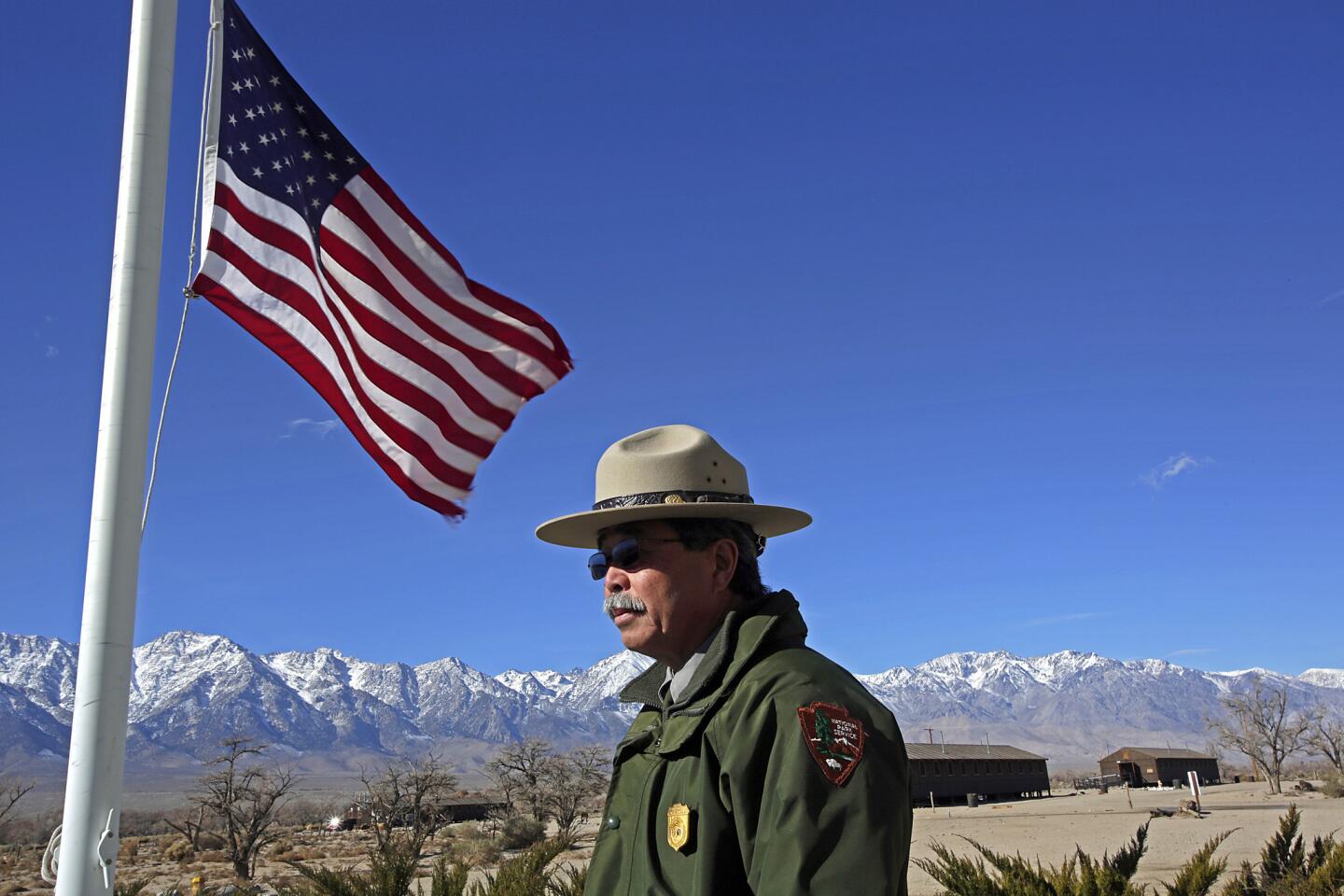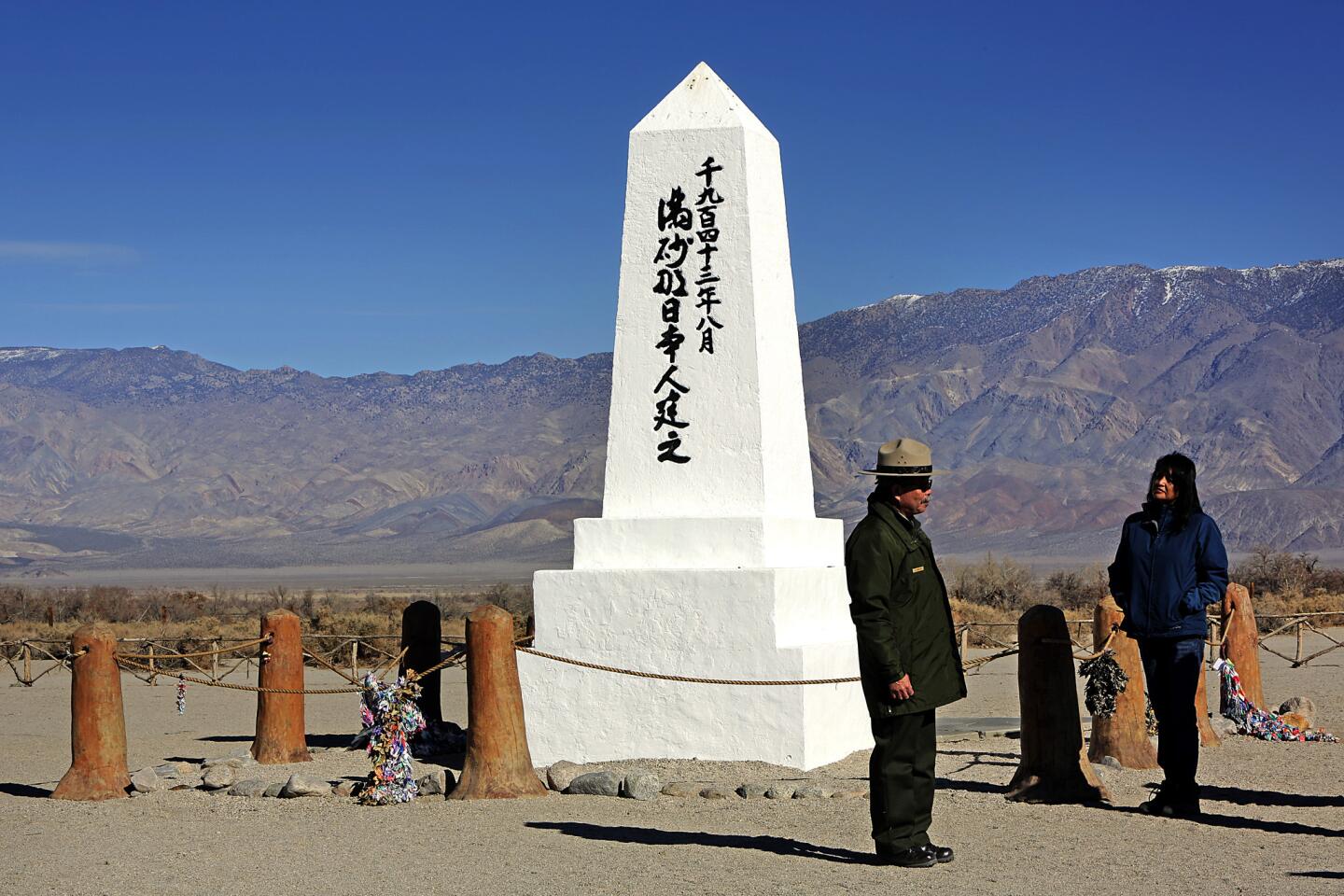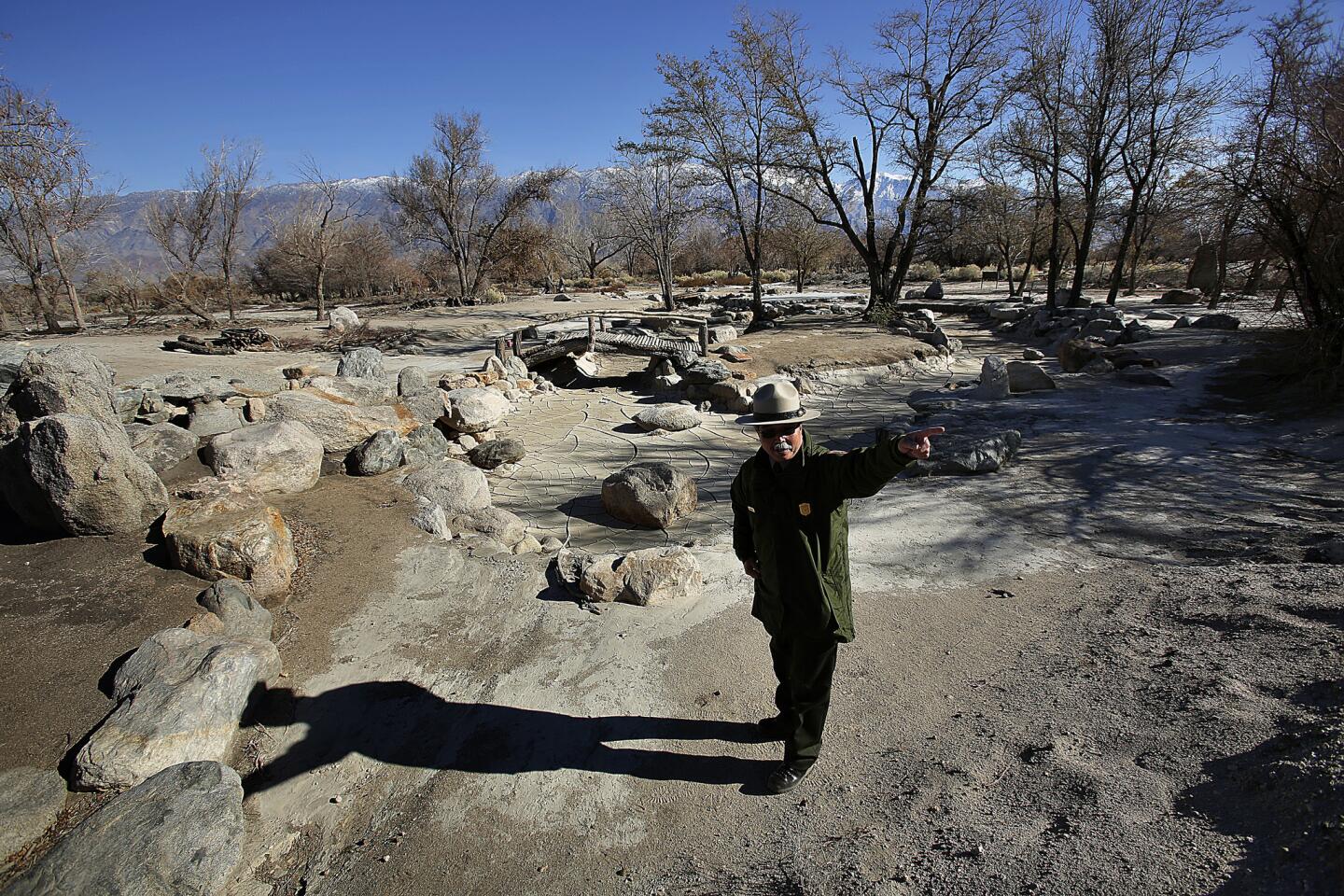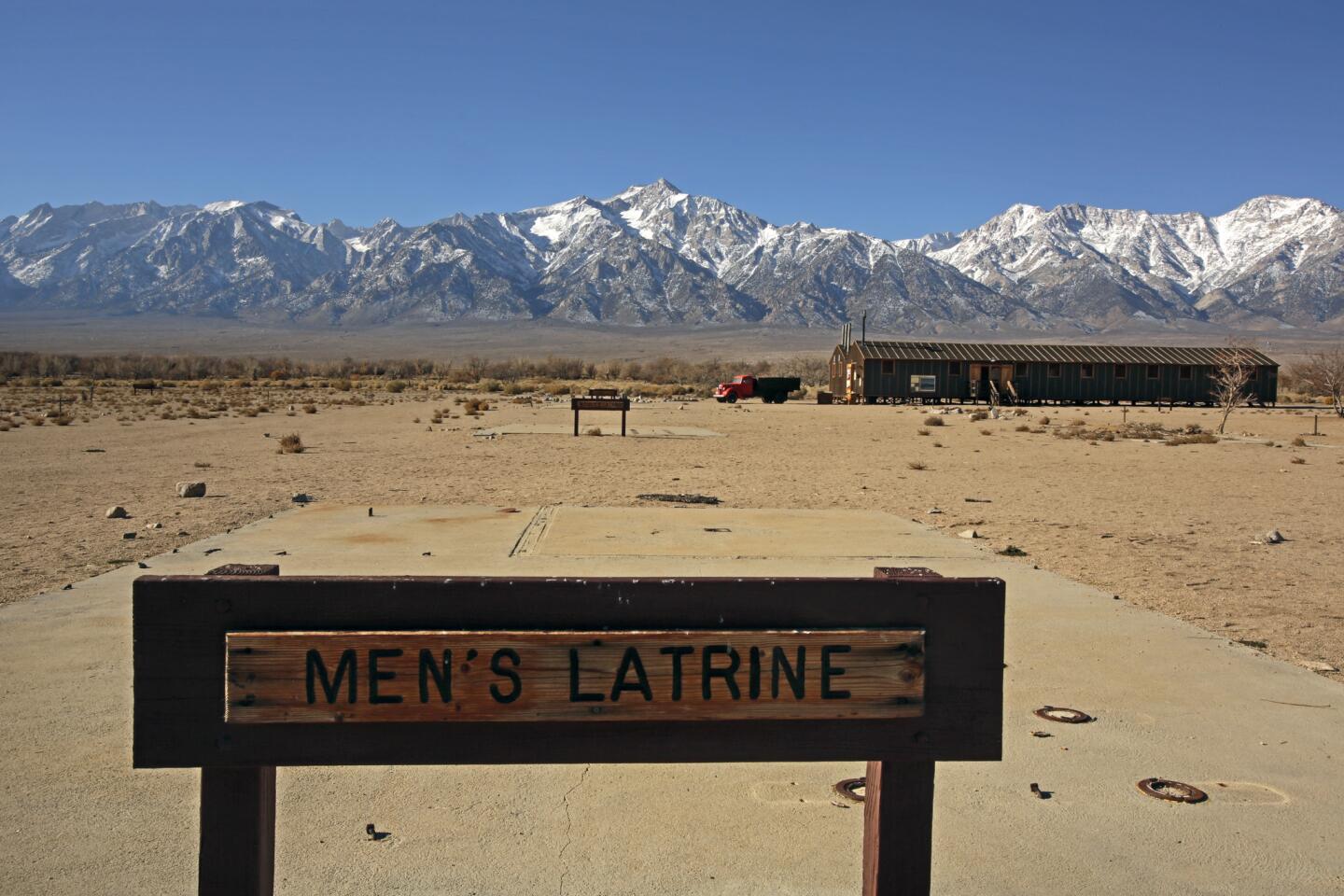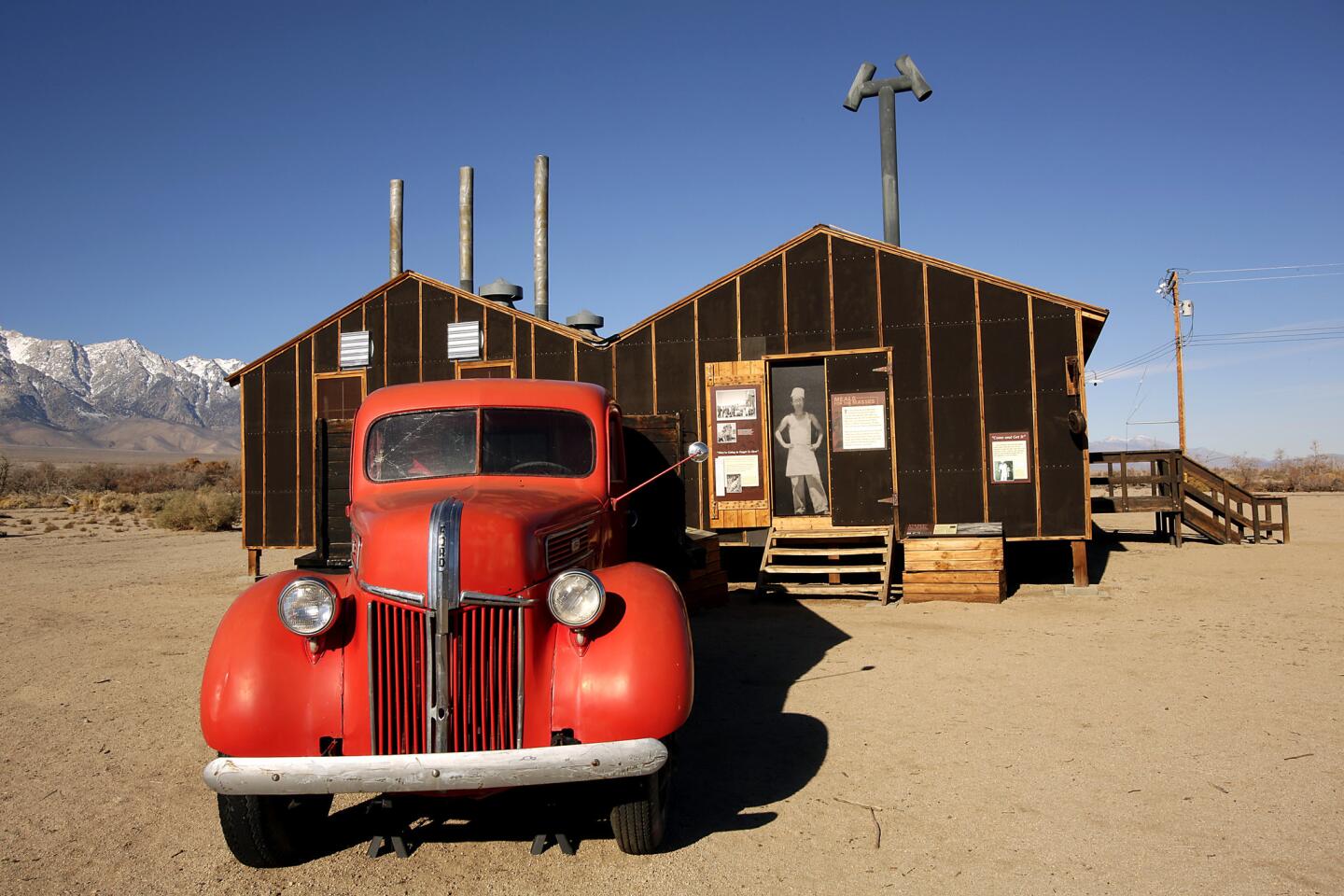DWP is moving ahead with plans for Owens Valley solar plant
- Share via
MANZANAR, Calif. — Over the objections of critics, Los Angeles is moving ahead with plans to build a $680-million 200-megawatt solar energy plant within view of this desolate Eastern Sierra site that was a Japanese American internment camp during World War II.
The Los Angeles Department of Water and Power’s Southern Owens Valley Solar Project would erect 1 million photovoltaic panels on 1,200 acres it owns roughly 6 miles south of Independence and 3 1/2 miles east of the Manzanar National Historic Site on U.S. 395.
Opponents led by Japanese American organizations and National Park Service officials are concerned that views of a solar complex in the distance would destroy an important element in understanding what internees here experienced 70 years ago: To be in Manzanar felt like being in the middle of nowhere.
The draft environmental impact statement says the solar field would appear as a thin, dark strip at the base of the Inyo Mountains. An adjacent 300,000-square-foot electrical substation, which is not addressed in the report, would be barely noticeable from the historic site, DWP officials said.
Critics of the plan say they have little leverage to stop it. “There is no agency that regulates vistas and views,” said Bruce Embrey, co-chair of the Manzanar Committee, a nonprofit dedicated to preserving the site. “We have moral authority, an appeal to the city’s social conscience. We are urging the DWP to consider alternative sites for its solar farm, perhaps on structures in downtown Los Angeles.”
The 2-square-mile facility would produce 440 gigawatt-hours of power annually, enough to service about 75,000 homes and allow the DWP to meet its state-required renewable energy goals. The southeastern portion of the Owens Valley provides among the highest solar resource values in the nation, according to the National Renewable Energy Laboratory.
The 814-acre Manzanar site was established by Congress in 1992 to serve as a reminder of the fragility of American civil rights and to honor families whose memories are tied to the harsh landscape framed by the 14,000-foot Sierra Nevada on the west and the 11,000-foot Inyo Mountains on the east.
“For the sake of our visitors’ experiences and the memories of our former internees, we must advocate for the area to remain undeveloped,” Manzanar Supt. Les Inafuku said.
Randy Howard, the DWP’s director of power systems planning and development, said critics’ fears are unfounded.
“Visual simulations and studies say the solar field could be seen from Manzanar,” Howard said. “However, it wouldn’t jump out at you.”
He said that if the DWP goes forward with the project, construction could begin in 2015 and be completed within four years.
The dispute has not dampened efforts to transform Owens Valley into a center for renewable energy production. Inyo County planners are reviewing a proposal by a Canadian firm, Northland Power Independence, to build a solar plant as large as the DWP’s on private property just north of the DWP site, beneath the Winnedumah Paiute Monument, a 60-foot-tall granite monolith on a ridgeline in the Inyo Mountains of spiritual significance to Paiute Indians.
“It would be cruel to industrialize this landscape,” said Paul Huelte, an environmental advisor and member of the Big Pine Paiute Tribe.
The Center for Biological Diversity agrees and is urging the DWP to consider alternative locations such as rooftops and parking lots in Los Angeles County, where habitat has already been destroyed.
The center is concerned that the draft environmental impact report fails to address the project’s “lake effect” in a migratory pathway: some birds may mistake solar panels as water and suffer injuries attempting to land on them. Even if they survive landing, some water birds could die if they are unable to get airborne again from dry land.
The report also fails to take into account the cumulative effects of permitted and proposed renewable energy projects in Inyo and adjacent counties on kit foxes and badgers, which have lost tens of thousands of acres of habitat to wind and solar facilities in recent years.
“We’re trying to organize a field trip out here for elected officials so that they could see the potential problems for themselves,” Inafuku said.
Manzanar receives 82,000 visitors each year and is the destination of annual pilgrimages to the vestiges of the detention camp: scattered foundations, a cemetery and rock gardens as well as stark vistas Inafuku calls “the unchanged presence of the past.”
The internment program began in February 1942 — two months after the Japanese attack on Pearl Harbor — when President Franklin D. Roosevelt signed Executive Order 9066, which gave military commanders the power to evacuate, relocate and intern “any and all persons” from certain areas to protect against sabotage and espionage. The order was used to round up thousands of U.S. citizens of Japanese descent without any evidence that they had attempted to hamper the war effort.
More to Read
Sign up for Essential California
The most important California stories and recommendations in your inbox every morning.
You may occasionally receive promotional content from the Los Angeles Times.


